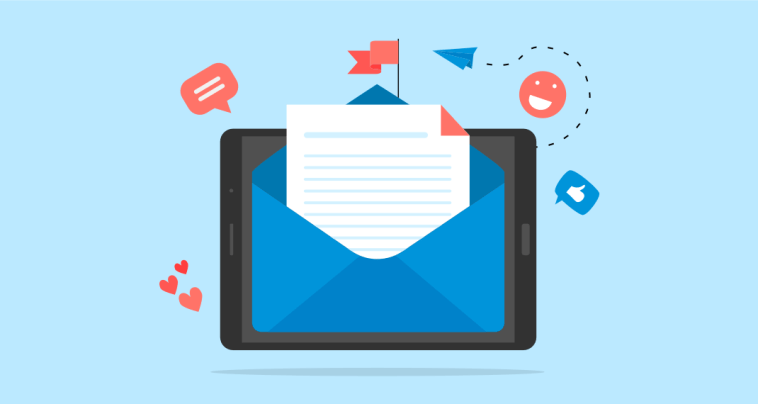Introduction.
Starting a new business can feel overwhelming, with a long to-do list that includes everything from designing your brand to creating a product or service that people want.
But among all these essential tasks, one tool often stands out as incredibly effective for reaching your target audience: email marketing.
Whether it’s a small local shop, an online store, or a new tech startup, email marketing has the power to help businesses grow without requiring a massive budget or tech-savvy skills.
This blog post explores why email marketing remains one of the most popular choices for business growth, especially for new companies trying to build a strong customer base from scratch.
We’ll look at what makes email marketing so effective, the benefits and potential drawbacks, and practical ways to get started. Along the way, we’ll cover some common questions you might have and offer real tips for turning email subscribers into loyal customers.
Why is Email Marketing Important for New Businesses?
Let’s face it—starting out can be tough. When you’re new, you don’t have the brand recognition of big names like Apple or Amazon, so getting people to notice you requires a strategy that balances cost with effectiveness.
Email marketing is an ideal option because it’s both affordable and personal. It allows businesses to connect directly with customers, bringing your product or service right into their inbox.
In terms of numbers, email marketing’s effectiveness is proven. According to the Data & Marketing Association, for every dollar spent on email marketing, businesses earn an average return of $42. That’s a huge benefit for startups and small businesses operating on tight budgets!
With email marketing, you can reach people who are genuinely interested in what you offer without having to spend as much as you would on other advertising channels.
What Are the Benefits of Email Marketing for New Businesses?
There are several reasons why email marketing is particularly beneficial for new businesses. Here are a few key advantages:
1. Direct Communication with Your Audience.
Unlike social media, where your message might get lost in a crowded feed, emails go directly to the inbox of people who’ve already shown interest.
This direct line of communication lets you engage with your audience on a personal level, increasing the likelihood they’ll read your message and take action.
2. Building Customer Relationships.
People are more likely to buy from a brand they trust. By sending well-crafted, helpful, and relevant emails, you can build relationships with your audience. Over time, these relationships can help convert subscribers into loyal customers.
3. Easy to Measure Results.
Email marketing platforms make it simple to track the performance of your campaigns. With metrics like open rates, click-through rates, and conversion rates, you can quickly see what’s working and adjust your strategy.
4. Cost-Effective Advertising.
For new businesses, budgets are often limited. Email marketing is one of the most cost-effective ways to advertise and reach potential customers.
Many email marketing services offer free tiers, which can be especially helpful if you’re just starting out.
5. Scalability and Customization.
Whether you’re targeting a small audience or looking to grow your list quickly, email marketing can adapt to your needs.
With customization features, you can personalize messages for different segments of your audience, making your emails feel more personal and relevant.
6. Automation.
Automation tools allow you to set up a series of emails in advance. This can be as simple as a welcome email for new subscribers or a more complex sequence of follow-ups for leads.
Automation saves time and keeps your audience engaged even when you’re focused on other areas of your business.
Are There Any Drawbacks to Email Marketing?
Email marketing is powerful, but it’s not without its challenges. Here’s a look at some potential drawbacks to keep in mind:
- Overwhelming for Subscribers
Many people receive dozens of emails every day, so there’s always a risk that your message might be overlooked. Being mindful of frequency and quality can help minimize this. - Building a Subscriber List Takes Time
If you’re a brand-new business, building a solid email list can take time. However, focusing on quality subscribers over quantity is often worth the extra effort. - Spam Filters and Unsubscribes
If you send emails too often or if your content doesn’t resonate, you risk being marked as spam or seeing a high unsubscribe rate. Staying compliant with email regulations, like CAN-SPAM, and offering genuine value helps maintain a healthy list. - Potentially Time-Consuming
Crafting effective emails takes time, especially if you’re just getting started. But with practice, you’ll learn what works best for your audience, and using templates and automation can reduce the time required.
Practical Tips for Getting Started with Email Marketing
For new businesses, getting started with email marketing doesn’t have to be intimidating. Here are some steps that can help:
- Choose the Right Email Marketing Platform
Look for a platform that offers what you need—like free templates, automation, and analytics—at a price you can afford. Many options, such as Mailchimp or SendinBlue, have free plans that are perfect for beginners. - Build Your Subscriber List Strategically
Make it easy for people to sign up for your emails by adding signup forms on your website and social media. Offer incentives like discounts or exclusive content to encourage sign-ups. - Craft Engaging and Valuable Content
Your emails should provide value to your audience. This can be anything from helpful tips to product updates, exclusive discounts, or even a peek behind the scenes. Avoid hard-selling in every email; instead, focus on building a relationship. - Segment Your Audience
Not every message is relevant to every subscriber. By segmenting your list, you can send more targeted messages, increasing the chances of engagement. - Optimize for Mobile
Most people read their emails on mobile devices, so make sure your emails are mobile-friendly. Test your designs on both desktop and mobile to ensure a seamless experience. - Analyze and Adjust
After each campaign, look at the results. Open rates, click-through rates, and conversion rates tell you what your audience responds to, allowing you to refine your approach over time.
Frequently Asked Questions
1. How often should I send marketing emails?
For new businesses, sending a welcome email series to introduce your brand and build interest can be a great start. After that, aim for a frequency that doesn’t overwhelm—maybe once a week or every other week, depending on your audience’s engagement.
2. How can I avoid being marked as spam?
Send emails only to people who have opted in, avoid excessive use of promotional language, and keep the email content relevant. Including a clear unsubscribe link also helps maintain trust and compliance.
3. What type of content should I include in my emails?
Try sharing a mix of helpful tips, product updates, discounts, and insights into your business. Avoid constant sales pitches, and focus instead on offering value to your readers.
4. Can I start email marketing without a large budget?
Absolutely! Many platforms have free plans for small lists, and even a simple, targeted approach can be effective without a huge investment.
5. How do I grow my email list quickly?
Encourage sign-ups by offering something valuable—like a discount or free download. Make sign-up forms accessible on your website and promote them through social media and other channels.
Conclusion
Email marketing is one of the most effective tools new businesses can use to connect with their audience, build lasting relationships, and drive growth.
By focusing on delivering valuable content, being consistent, and engaging your subscribers in a personal way, you can use email marketing to create a loyal customer base and fuel your business’s expansion.
So, as you set up your first campaign or refine your strategy, ask yourself this: How can email marketing help my new business to grow, and what steps can I take today to make it happen?




GIPHY App Key not set. Please check settings